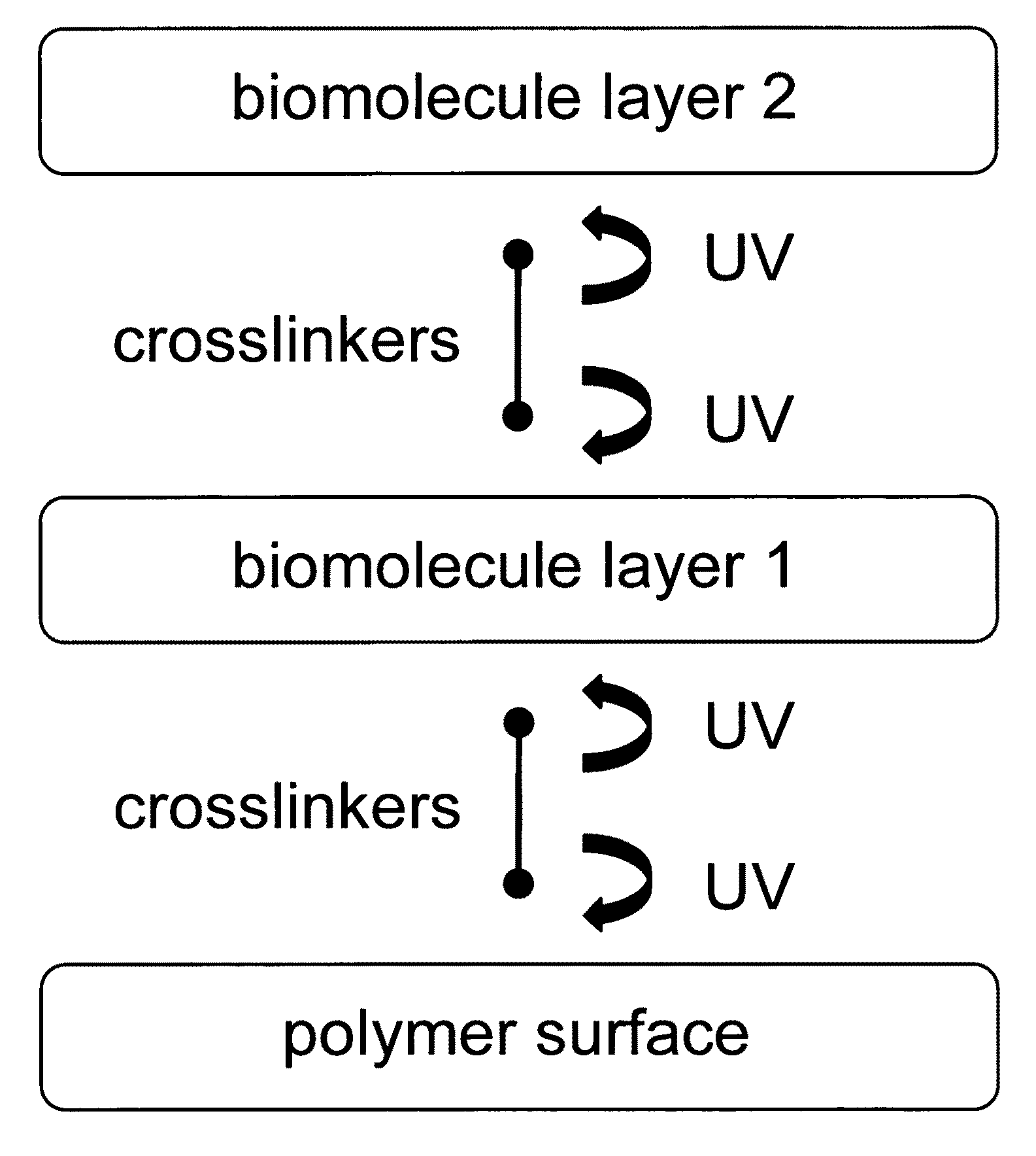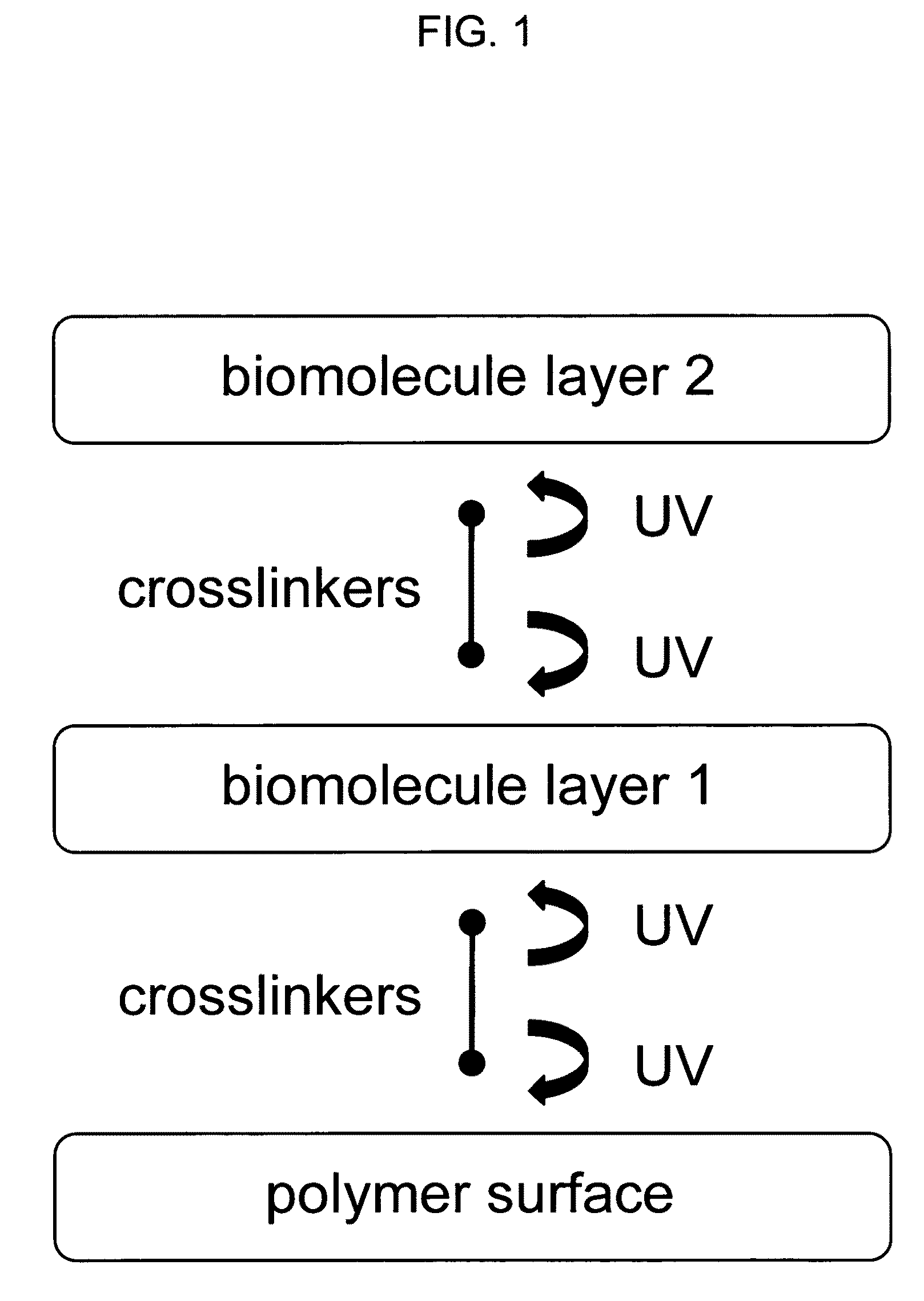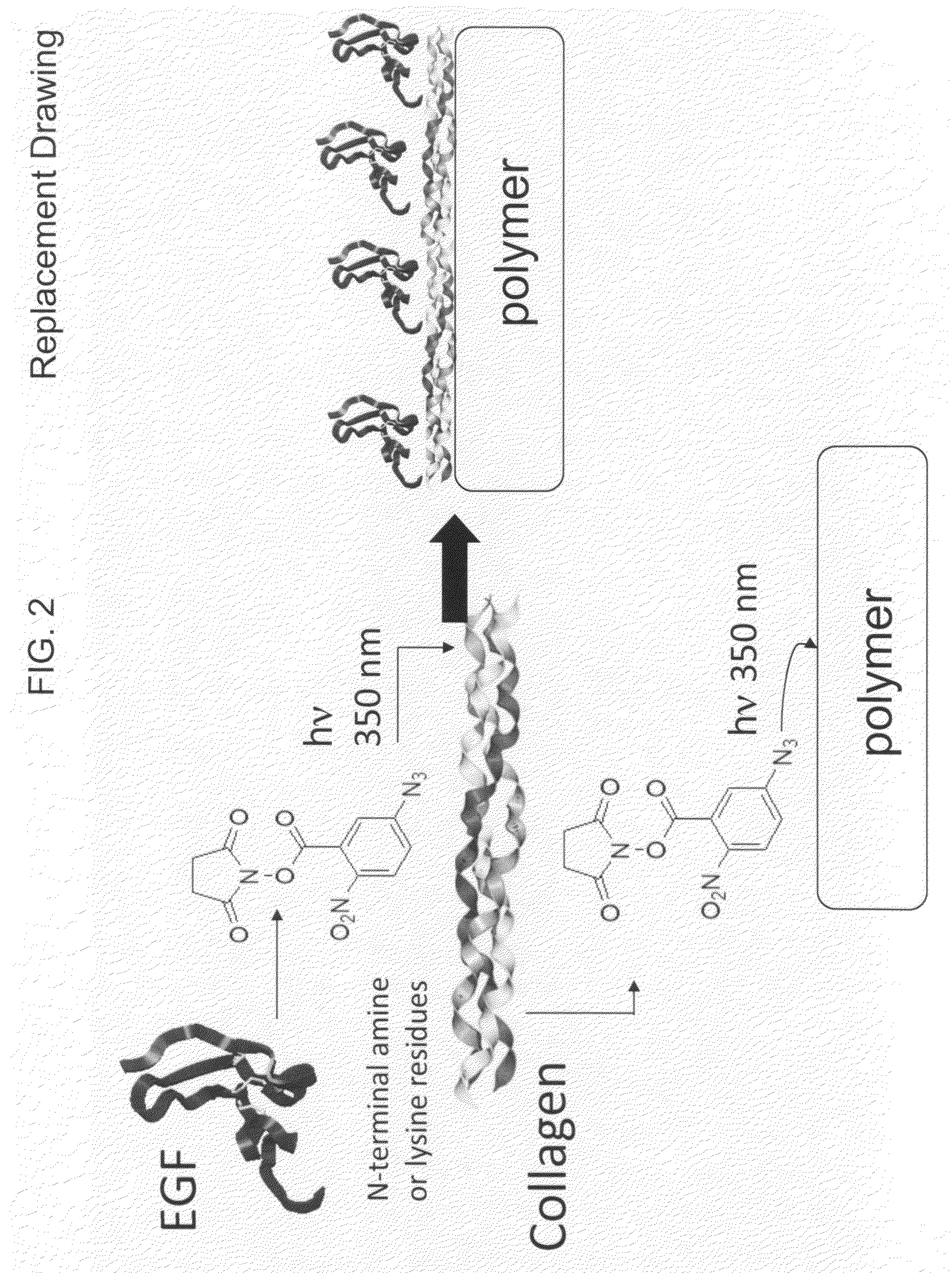Sequential coupling of biomolecule layers to polymers
a biomolecule and polymer technology, applied in the field of tissue engineering, can solve the problems of reducing the availability of corneas and inability to perform corneal transplants in many parts of the world
- Summary
- Abstract
- Description
- Claims
- Application Information
AI Technical Summary
Benefits of technology
Problems solved by technology
Method used
Image
Examples
Embodiment Construction
[0021]The present invention is a method (FIG. 1 and FIG. 2) for creating bioactive polymer surfaces through sequential coupling of biomolecule layers. Wound healing in vivo is a sophisticated process involving interactions between migrating cells, their underlying matrix, and available growth factors. For a synthetic material to support this process on its surface, it must mimic the natural extracellular matrix (basement membrane), which contains a combination of proteins, growth factor (or growth-factor-like domains), and proteoglycans. In vitro and in vivo experiments have shown that photochemical modification of non-adhesive PEG / PAA hydrogel surfaces with collagen type I can support the adhesion and multilayered growth of corneal epithelial cells. Presented in this invention is a method for sequentially coupling layers of cell adhesion-promoting biomolecules (e.g. matrix proteins) and cell proliferation promoting biomolecules (e.g. growth factors) to provide a more biomimetic syn...
PUM
| Property | Measurement | Unit |
|---|---|---|
| Concentration | aaaaa | aaaaa |
| Concentration | aaaaa | aaaaa |
| Concentration | aaaaa | aaaaa |
Abstract
Description
Claims
Application Information
 Login to View More
Login to View More - R&D
- Intellectual Property
- Life Sciences
- Materials
- Tech Scout
- Unparalleled Data Quality
- Higher Quality Content
- 60% Fewer Hallucinations
Browse by: Latest US Patents, China's latest patents, Technical Efficacy Thesaurus, Application Domain, Technology Topic, Popular Technical Reports.
© 2025 PatSnap. All rights reserved.Legal|Privacy policy|Modern Slavery Act Transparency Statement|Sitemap|About US| Contact US: help@patsnap.com



